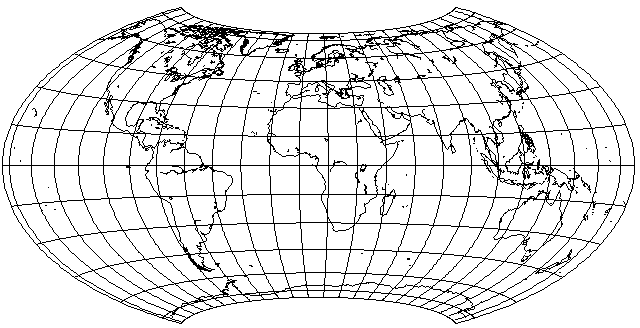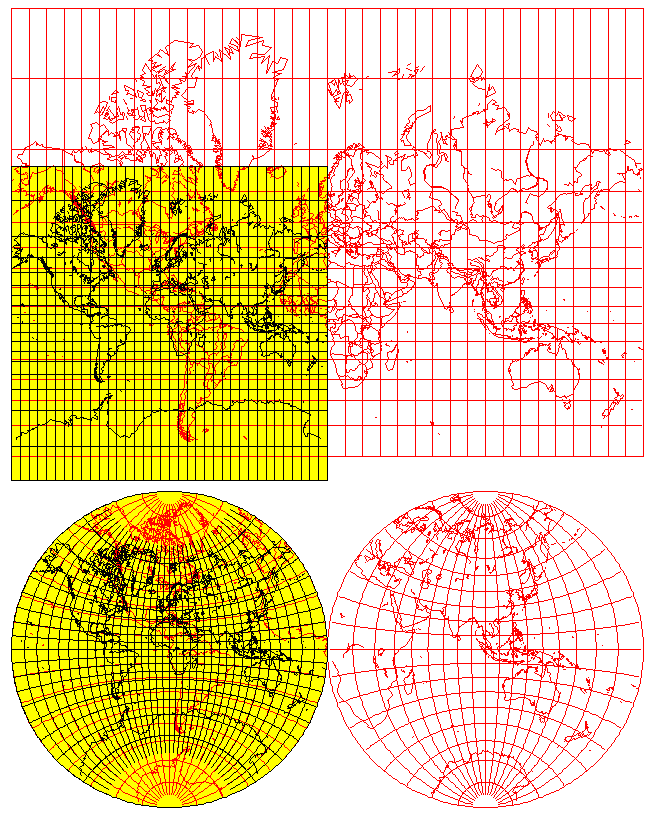daan wrote:Hammer recognized that the practice preserves differential areas. That turned the technique from “huh, cute” to important.
Oh, that's true. Still, given that Aitoff's invention was recognized as original and valuable in Germany at the time, for Hammer to wish to appear not to be trying to steal credit for someone else's invention is not unreasonable. So he titles his paper something like "An Equal-Area version of Aitoff's projection", explains his idea in a paper of which he is the author, without feeling the need to mention personalities once in the paper... because he is confident that readers of the paper will realize that he published this paper about an idea, small though it may be, of his own, rather than being called upon by Aitoff to report Aitoff's new brainstorm in the literature.
And it
would have worked, and, indeed, it
did work, in the German-speaking world (speaking of oneself in the first person, rather than as "the author" is not the custom in the scientific literature and so on)... but in the English-speaking world, his paper was seen by someone who apparently didn't understand much German, and also apparently thought the German scientific community was made up of incomprehensible aliens who publish papers for each other; possibly a hive mind.
Hammer didn't toot his own horn because a scientific journal is not the place for that sort of thing; I can't blame him for what is a shocking breach of academic standards through carelessness by one individual in the English-speaking world - whoever he may be - that went unchecked for so long. Of course, _these days_, if someone is so daring as to publish a scientific paper in German, one will usually include an English-language abstract, but back in the 19th Century, the overwhelming dominance of the United States in the industrialized world was not quite what it became after World War II.
What is mysterious to me is what people failed to think of that
didn't require a knowledge of foreign languages. The same 1912 book which introduced Hammer's projection to the English-speaking world in 1912 also exhibited a transverse aspect of the Mollweide. Yet, apparently, it took until 1942 before someone thought a transverse aspect of Hammer's projection was worth doing.
Of course, transverse and oblique aspects of projections require a lot of calculation. And the Mollweide projection, being pseudocylindrical, required less calculation than the Hammer. Seeking an optimal distribution of error for an oblique aspect... just may not have been felt to be worth the effort. As well, comparing Bartholemew's Nordic to a similarly obliqued Mollweide, the former puts Britain and continental Europe in an area with lower error, but the latter may have smaller area for the United States, so perhaps the Mollweide was actually regarded as better balanced.
In 1948, Bartholomew wouldn't have had a desktop computer, he wouldn't even have had the opportunity to run out and buy an SR-59 pocket calculator with magnetic cards (like John P. Snyder, of course). But still, things had changed since 1912. So the question that now besets me is: did Bartholomew make use of, say, IBM electronic tab equipment (mechanical equipment by Powers-Samas, somewhat more common in the United Kingdom, wouldn't have been flexible enough) to assist him in the required calculations for these projectins? (Even
Flattening the Earth, of which my copy has arrived, answers this not.)

